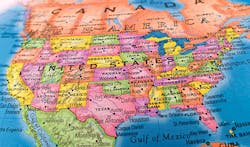"Death on the Job: The Toll of Neglect," marks the 24th year the AFL-CIO has produced its findings on safety and health protections for workers in the United States. The report shows the highest workplace fatality rates were found in North Dakota, Alaska, Wyoming, West Virginia and New Mexico.
According to the report released April 29, 4,585 workers were killed in the United States in 2013 due to workplace injuries. An additional estimated 50,000 workers died from occupational diseases, resulting in a loss of nearly 150 workers each day from preventable workplace conditions.
“America’s workers shouldn’t have to choose between earning a livelihood and risking their life, yet every day too many end up on the wrong end of that choice,” said AFL-CIO President Richard Trumka. “Corporations are prospering while working people suffer because of corporate negligence and insufficient government oversight. We must go beyond mourning those we’ve lost, and take bold, decisive action to ensure that a day’s work brings opportunity, not the risk of death or injury.”
While workplace deaths and injuries were high in many private sector industries, such as oil and gas extraction, the injury rate for public sector workers was 58 percent higher than for private sector workers. In fact, 8 million state and local public employees lack any OSHA protections.
The AFL-CIO categorized OSHA oversight and enforcement as “weak.” Federal OSHA has the resources and staff to inspect workplaces on average only once every 140 years. The average penalty for serious violations was $1,895, and the median penalty for worker deaths was only $5,050.
Other report highlights include the startling rise of Latino worker deaths, as the Latino fatality rate was 18 percent greater than the overall rate, and the urgent need to update OSHA silica safety standards based on near-century old research.
“As a third-generation coal miner, I am all too familiar with the fear and uncertainty of not knowing whether a loved one will come home safe and healthy from a day’s work,” said Trumka. “As we mourn the dead we should remember to fight for the living.”
Trumka noted that members of the United Steel Workers went on strike in February to highlight the need for tighter safety regulations at refineries across the country. “During the strike, an explosion at an ExxonMobil refinery in California injured four workers and shook neighborhoods for miles around, reinforcing the need for corporations to do more to address refinery safety,” Trumka added.
He said the AFL-CIO also wanted to highlight the work done by health workers in the wake of the Ebola crisis, both abroad and at home. However, “many aid providers themselves fell ill with the disease. No one providing a service to the community should risk his or her life due to lack of effective protective gear,” said Trumka.
“While we have made great strides in making workplaces safer, too many hardworking people both in this country and around the world continue to be hurt or killed on the job,” he said. “Today and every day, we must strive to achieve safe workplaces for every worker and demand that lawmakers create good jobs that ensure the dignity and safety every worker deserves.”
About the Author

Sandy Smith
Sandy Smith is the former content director of EHS Today, and is currently the EHSQ content & community lead at Intelex Technologies Inc. She has written about occupational safety and health and environmental issues since 1990.
